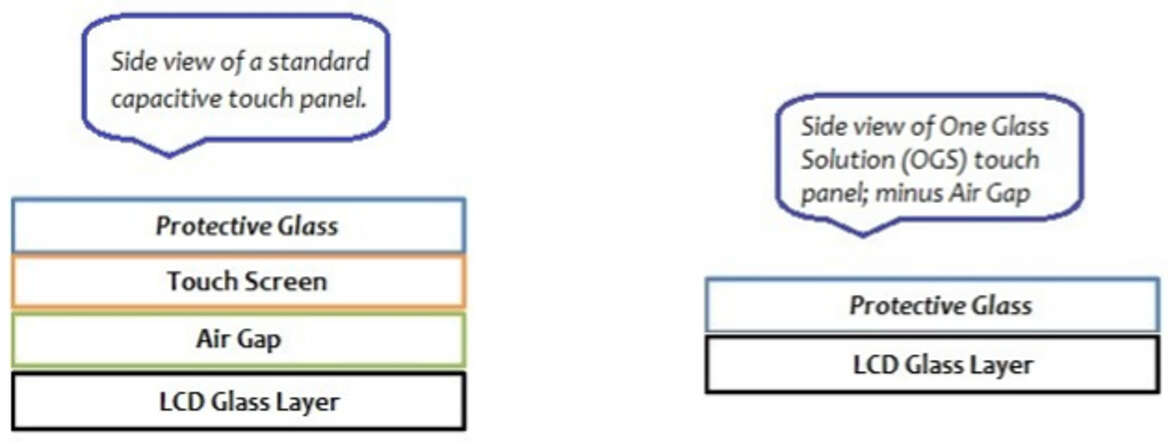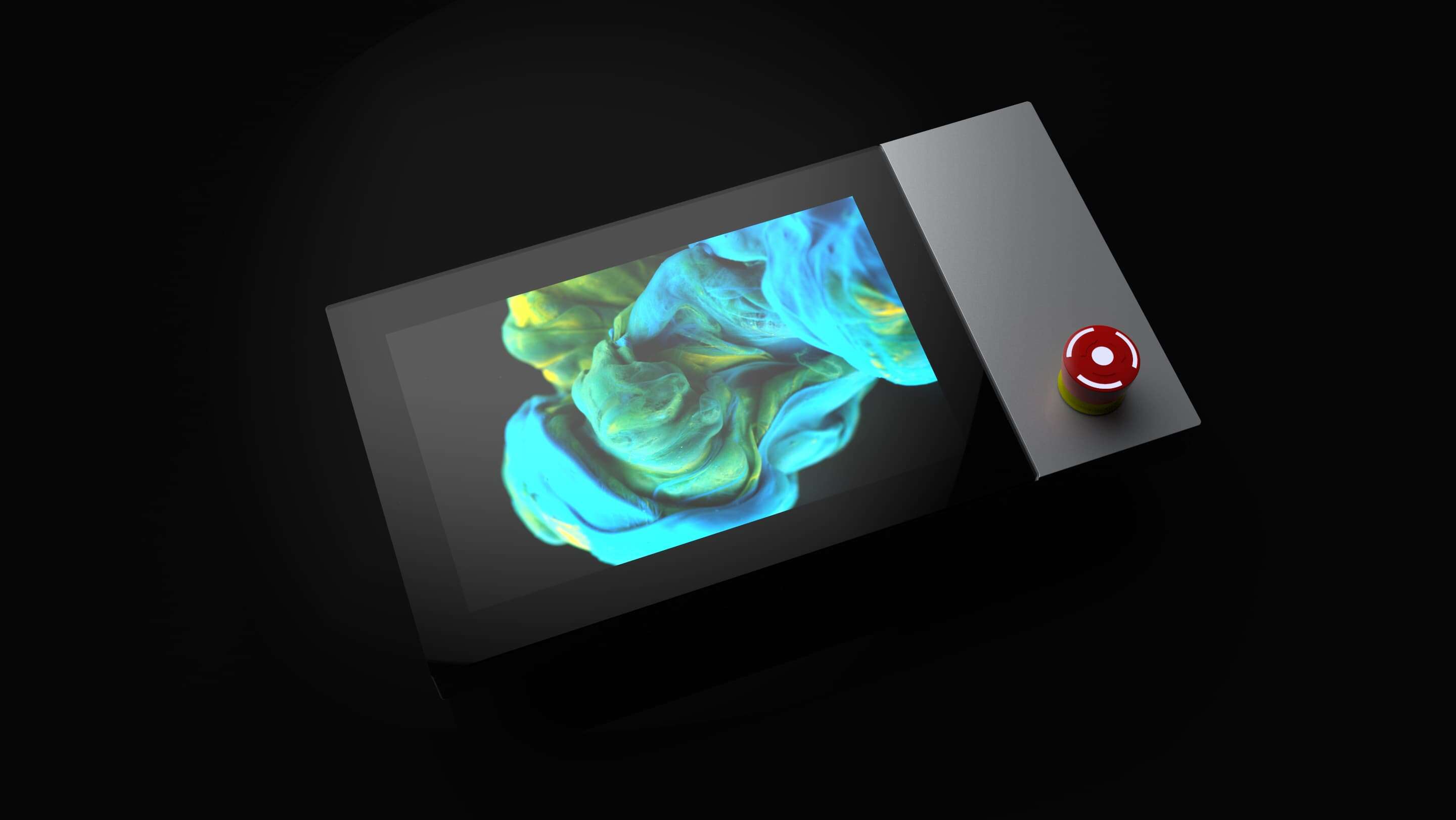Resistive and Capacitive Open Frame Touch Displays
Interelectronix specializes in the development and production of individual and particularly high-quality open frame touch displays based on resistive GFG touchscreens as well as projected capacitive (PCAP) touchscreens.
Our open frame solutions are specifically designed to meet the specific requirements of the application and future environmental conditions. The selection of the touch technology as well as the integration design is carried out from the point of view of a seamless integration of the Open Frame Touch Display into the application of our customers. In this way, we ensure that a 100% secure system transition is achieved between the Open Frame Touch Display and the application.
The Open Frame Touch Displays we offer are:
- Available in sizes from 10 inches to 24 inches
- and are equipped with VGA, HDMI and DVI interfaces
equipped. An extensive range of glasses, foils and filters makes it possible to develop the most suitable open frame touch display construction for every conceivable application and environmental conditions. Thanks to our design team with many years of experience and our highly efficient production, the creation of a prototype is possible within just a few days!
Resistive Open Frame Touch Displays
The resistive open frame touch display solutions developed by Interelectronix are based on the patented ULTRA touch screen. This resistive open frame touch display is an extremely robust and resistant GFG glass-film-glass touchscreen construction that is extremely
- is resistant to water, -Chemicals -Scratch -Flaps
- as well as other damages.
Patented GFG construction for durability
The patented glass film glass construction gives the ULTRA touchscreen its unique resistance. For this reason, open frame solutions based on the ULTRA GFG touchscreen are preferably used where particularly high resistance to mechanical impacts, acid resistance or absolute waterproofing (IP 68) is desired.
In contrast to conventional resistive touchscreens with a polyester surface, the sensor of the patented ULTRA GFG touchscreen is protected by a robust micro-glass surface and a laminated glass back, which significantly increases the service life of the sensor.
Optical bonding for more durability
The durability of this Open Frame Touch Display can be significantly improved by pouring out the air gap between the touchscreen and the display. In this process, known as optical bonding, the display and the touchscreen are connected to each other under cleanroom conditions with a highly transparent liquid adhesive, resulting in a touch display that is not only extremely robust, but also prevents condensation or dust formation between the touchscreen and the display.
This most widely used open frame touch display system is pressure-based, in which pressure is applied to the surface of the touch screen by a finger or object.
The surface of the resistive touchscreen is touch-sensitive and consists of two conductive indium tin oxide (ITO) layers. The two opposite layers are separated from each other by means of small spacers. The back layer is applied to a stable surface, while the front layer is usually covered with stretchy polyester or, in the case of our resistive ULTRA touchscreen, is made of micro glass.
Suitable mounting methods for resistive open frame touch displays are:
- Front Mounting
- Rear mounting
- Sandwich mounting
Projected Capacitive Open Frame Touch Displays
Projected capacitive touchscreens have been increasingly used in the consumer sector for years and have fundamentally changed the requirements for the usability of an application. The decisive factor was the multi-touch operability of a touchscreen associated with Projected Capacitive Touch (PCAP) technology.
The projected capacitive technology is extremely user-friendly, as it reacts to mere touch without pressure and has a positive effect on the longevity of the touch display due to its high surface resistance.
Another significant feature is the ability to design touch displays that are frameless and have a continuous glass surface.
The structure of a frameless, projected-capacitive open frame touch display differs significantly from that of a resistive touch display, which is designed as a rear mount design, for example, and requires an independent design for integration.
The one-glass design (OGS) can be named as an innovative touch panel technology, the structure of which is characterized by a reduced number of layers and is characterized by the layers
"Cover Glass – Sensor Display – Display Glass"
can be described.
One Glass Touch Technology (OSG)
OGS is a relatively new touch panel technology and is also known as One Glass Touch Technology, Sensor on Lens (SOL) or Direct Pattern Window (DPW). The special feature of the OGS Touch Display Integration is that the sensor in the form of an ITO layer is no longer located on a glass lying under the cover glass, but is applied directly to the underside of the cover glass. Furthermore, the air gap between the touchscreen and the display is eliminated in this design.

The advantages of an OGS construction are:
- Ultra-slim design: The open frame touch display is considerably thinner
- Improved efficiency through simplified design and reduction of layers
- Higher optical transparency thanks to fewer layers (~90% light transmission)
- Improved touch performance
- Reduced manufacturing costs due to fewer components and production steps
Robust and durable
If required, an OGS touch display can also be provided with a chemically hardened cover glass, which makes the Open Frame Touch Display considerably more robust and durable. The sensor area can either cover only the display area or can also be designed beyond to enable printed control surfaces outside the display. Furthermore, a four-color printing of the cover glass, holes and curves, an anti-reflective coating as well as infrared filters, EMC filters or UV filters are possible.
The PCAP touchscreen is connected to the display using the optical bonding process under clean room conditions and places special demands on the production facility, the technical equipment and the personnel. Possible mounting methods for projected capacitive open frame touch displays are:
- Front mount design
- Rear mount design
- Bezel-less design
- OGS – One-Glass Design
- GG – Glass-on-Glass Design
